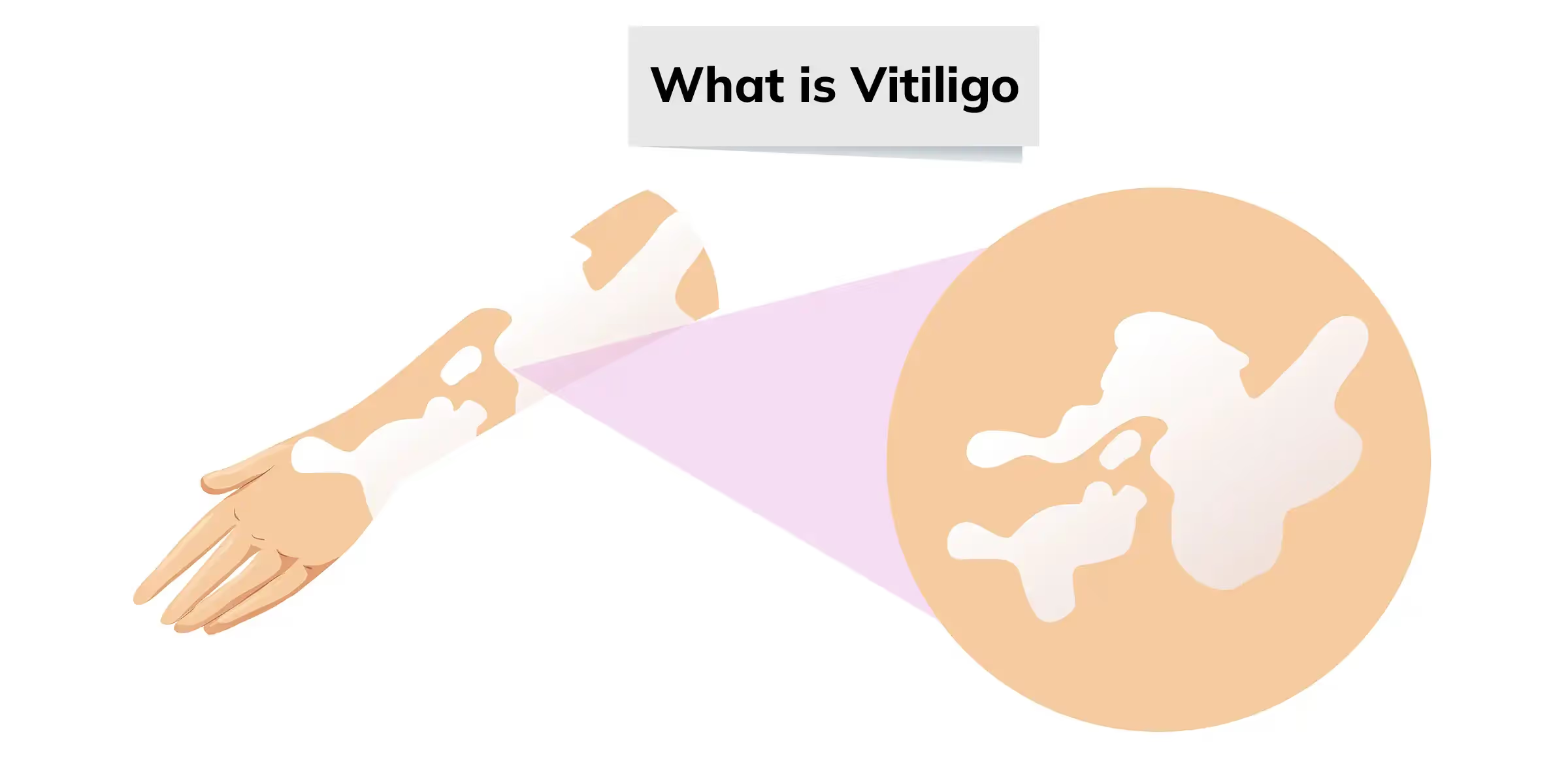Vitiligo: A Silent Autoimmune Condition That Changes More Than Just Skin Color
Vitiligo is more than a skin condition—it's a life-changing autoimmune disease that impacts both physical appearance and emotional well-being. While not contagious or life-threatening, vitiligo can deeply affect self-esteem, especially in societies that place a high value on appearance.
On this World Vitiligo Day, Fakeeh University Hospital in Dubai sheds light on the symptoms, causes, treatment options, and emotional impact of vitiligo, and emphasizes the importance of early diagnosis and compassionate care.
What is Vitiligo?
Vitiligo is a chronic autoimmune skin disorder where the skin loses its pigment due to damage or destruction of melanocytes—the cells that produce melanin. The condition manifests as white or light patches on the face, hands, feet, and other parts of the body.
It can also affect:
- Hair (turning white or gray)
- Inside of the mouth or nose
- Areas around the eyes and lips

Causes of Vitiligo: What Triggers This Condition?
Vitiligo is multifactorial, meaning several overlapping factors contribute to its development:
- Autoimmune response: The body mistakenly attacks its own pigment-producing cells.
- Oxidative stress: Imbalance of free radicals that harm melanocytes.
- Genetics: Over 40 genes—including NLRP1—are linked to increased risk.
- Environmental triggers: Skin injuries, sunburn, chemical exposure, or infections.
Common Symptoms of Vitiligo
- Irregular white patches on the skin (often symmetrical)
- Premature graying of hair, eyebrows, eyelashes, or beard
- Loss of color inside the mouth or nose
- Increased sun sensitivity in depigmented areas
Does Vitiligo Cause Itching?
While not a primary symptom, some patients report:
- Itching or tingling before new patches appear
- Skin irritation due to dryness or inflammation
- Early immune responses that mimic dermatitis
The Psychological Impact of Vitiligo
Living with vitiligo can be emotionally challenging. Many patients face:
- Low self-esteem
- Anxiety and depression
- Social withdrawal
- Discrimination or stigma, especially in cultures where appearance is linked to social acceptance
Dr. Rana Aboutrab, dermatologist at Fakeeh University Hospital, emphasizes the role of mental health support in managing vitiligo:
"It’s not just about skin—psychological well-being is equally important. Confidence and self-acceptance play a huge role in recovery."

How Is Vitiligo Diagnosed?
- Clinical skin examination
- Wood lamp test (UV light to detect depigmentation)
- Skin biopsy (if needed)
- Blood tests for related autoimmune diseases (thyroid, diabetes)
Is There a Cure for Vitiligo?
There is no definitive cure, but multiple treatment options can help restore pigment, stabilize progression, and improve appearance.
Available Vitiligo Treatments:
- Topical creams – Corticosteroids, tacrolimus, pimecrolimus
- Phototherapy (NB-UVB) – 2–3 sessions/week
- Surgical grafting – For stable vitiligo patches
- Micro-pigmentation – For small visible areas (e.g., lips)
- Depigmentation therapy – For widespread cases using monobenzone
Breakthrough Treatment: JAK Inhibitors
A major advancement in vitiligo treatment includes the use of JAK inhibitors like:
- Ruxolitinib (Opzelura) – The first FDA-approved topical treatment for vitiligo.
Clinical trials showed 50% repigmentation success on the face after one year of continuous use.
How to Care for Vitiligo Daily
Patients are advised to:
- Use broad-spectrum sunscreen SPF 50+
- Avoid peak sun hours
- Wear protective clothing
- Moisturize depigmented areas
- Avoid skin trauma or friction
Support & Mental Wellness at Fakeeh University Hospital
Fakeeh University Hospital, our dermatologists and psychologists work together to provide holistic care for vitiligo patients. From advanced dermatological treatments to mental health support, counseling, and support groups, we ensure our patients feel seen, supported, and empowered.
"Your skin color is only one part of your story. We’re here to help you embrace it with confidence and health." — Dr. Abu Tarab


